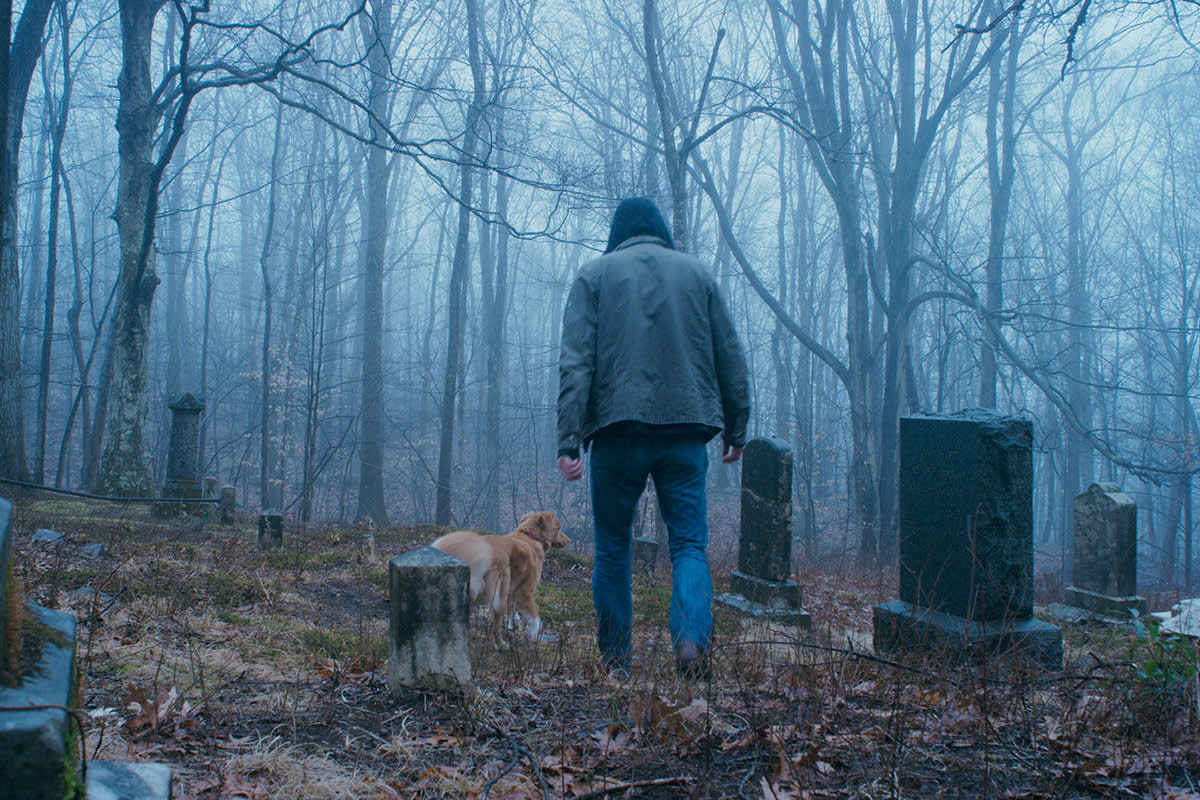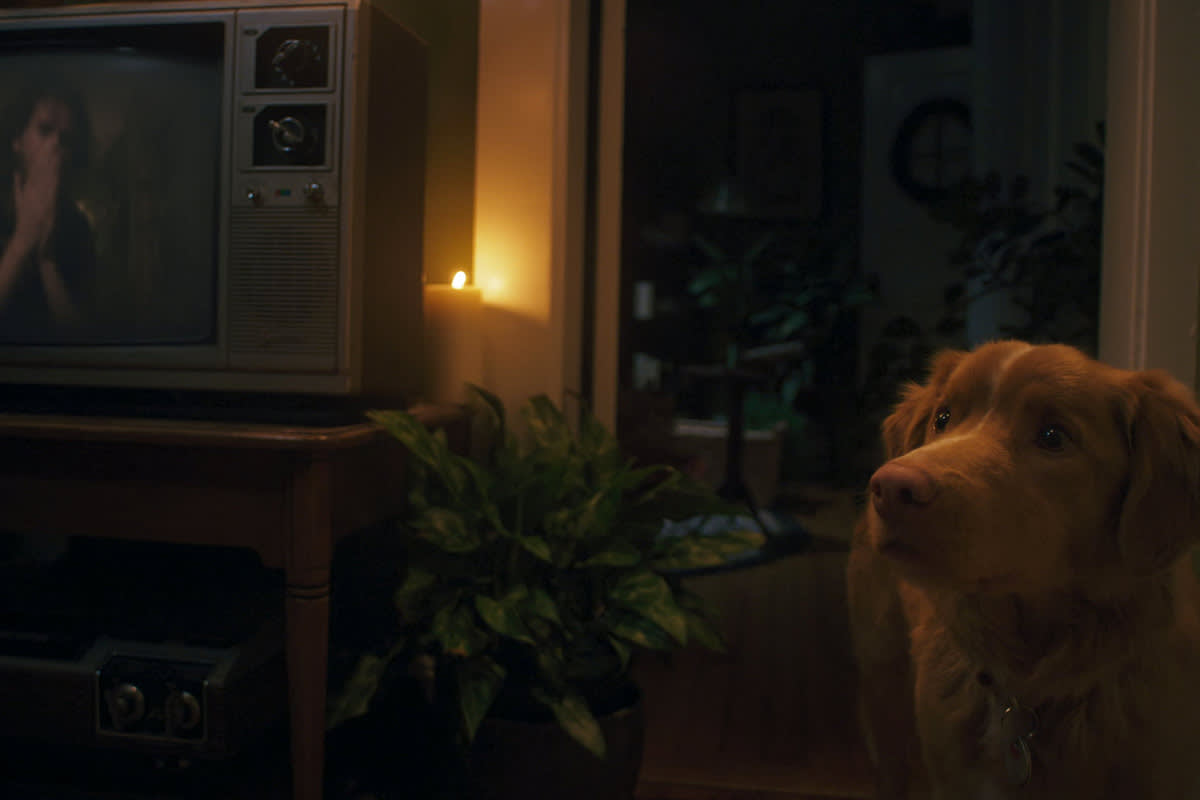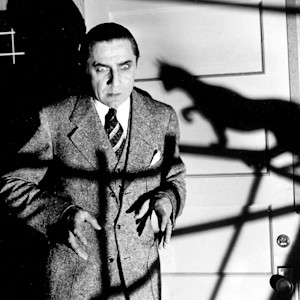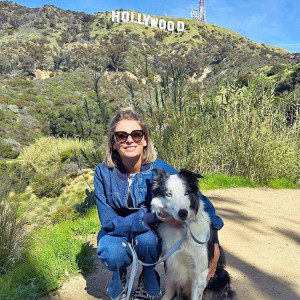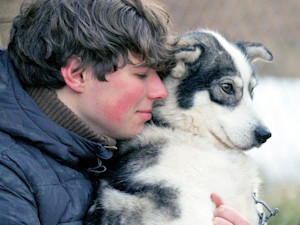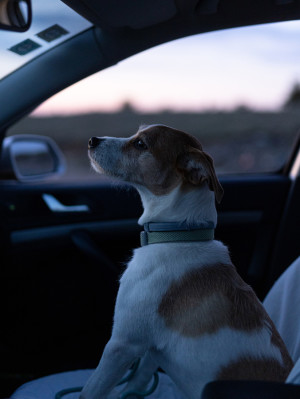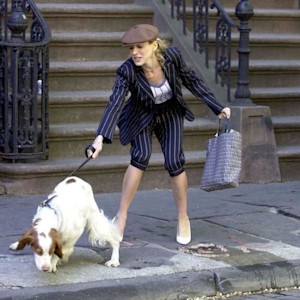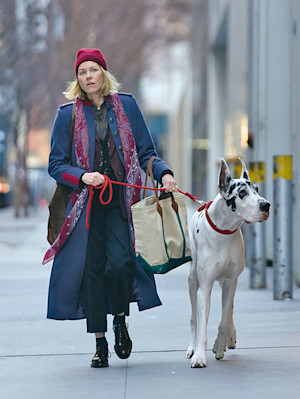The Dog From Good Boy Is Campaigning to Be Nominated for a Best Actor Oscar
He is asking the academy to throw him a bone.
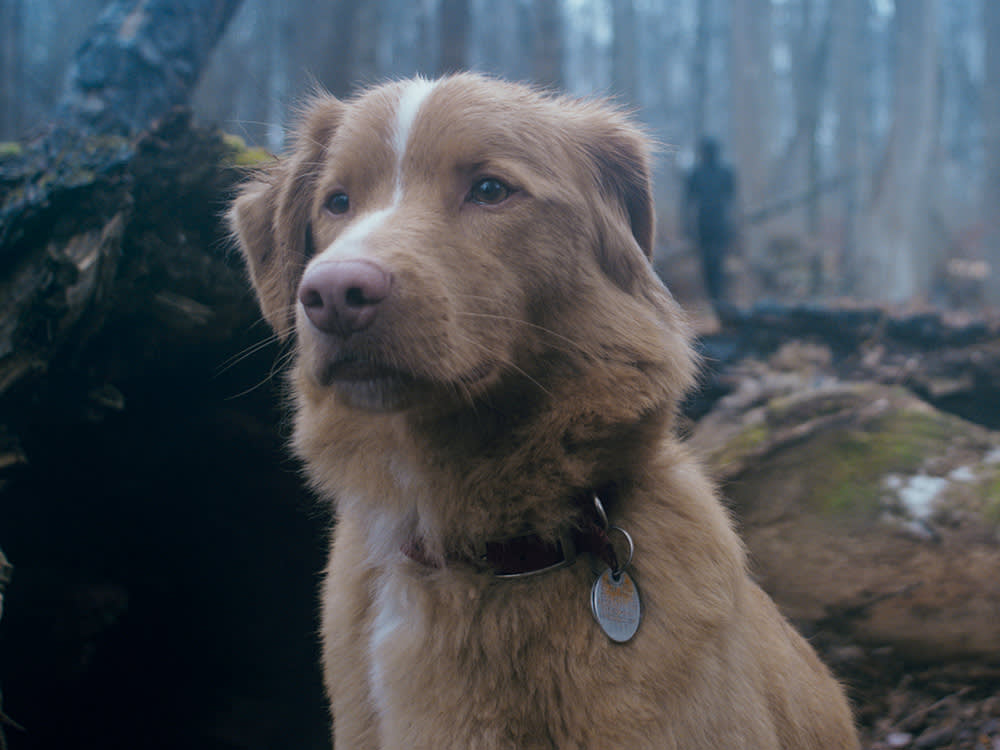
Share Article
News update, Oct. 10
It's not often that horror gets recognition at the Academy Awards, but it does happen (The Substance, Misery, Rosemary’s Baby, The Silence of the Lambs, Get Out, etc.). Indy, the star of the new horror flick Good Boy is trying to cash in on the luck of its predecessors in the genre. The thing is, Indy is a dog, nonetheless, a very good actor. Via IFC, the studio that produced Good Boy, Indy “wrote” a letter to the Academy of Motion Picture Arts and Sciences pleading his case to be considered for Best Actor at the 2026 Oscars.
“Despite my critically acclaimed role in the recent film ‘Good Boy,’ — I have been deemed ineligible for the Best Actor category,” Indy laments in the letteropens in new tab obtained exclusively by Variety and distributed by IFC. “Apparently, I am not a good enough boy for you.” He continued: “How many great performances must go overlooked before the Academy throws us a bone?”
The closing lines of the letter were the real masterpiece, however: “We ask that you stop lifting your leg on the contribution of myself and the many great animal actors whose work continues to go unrecognized.” He even signed off with his official paw print.
How much do you spend on your pet per year?

We here at Kinship applaud Indy for his fantastic use of canine puns and of course his Oscar-worthy performance. Timothée Chalamet could never. Please see our original review of Good Boy below.
Warning: This article contains spoilers, and answers the burning question of whether or not the dog survives.
Whenever a dog shows up in a movie, I immediately get nervous. From the moment I learn the adorable pooch’s name, my stomach churns with dread, like a squeaky toy that’s fallen prey to a particularly tenacious set of jaws.
You know why. We all know why. And so does the new horror movie Good Boy, which premiered at South by Southwest in March and hits theaters Oct. 3. A story told completely from the dog’s perspective, this film plays on one of our most deeply conditioned expectations: Whether it’s a horror movieopens in new tab, an earnest coming-of-age storyopens in new tab, or a romantic newlyweds picopens in new tab, chances are, if we spend any amount of time getting to know the canine best friend, it’s because they’ll soon be dead.
Thank God that Indy, the Nova Scotia Duck Tolling Retriever we follow throughout the film, is far more than a sidekick. For once in a horror movie, the dog is not the villainopens in new tab or helpless fodderopens in new tab for an early jump scare. Instead, this pup is a full-fledged protagonist — and you can see that from how the film is made.
There’s no putting Indy in a corner... even if he’s creepily staring at one.
Director Ben Leonberg, who cast his own dog as Indy, recently told CinemaBlendopens in new tab that he knows why so many people have Googledopens in new tab whether Indy survives the movie. “I think it does speak to what horror movies have trained us to think happens to most dogs in horror movies,” he says. “Which is to say the whole film is built on this trope of, ‘Hey, you know how your dog might stare into an empty corner?' Or, how in horror movies, there's that dog who's always suspicious of the basement or suspicious of that weird old neighbor?’ Usually that dog in horror movies doesn't make it out of Act One.”
But Good Boy has much bigger plans for Indy than a cheap death. From the very first scene, which opens on his sleeping face, we can see the main-character energy oozing from Indy’s pores. From that point forward, clever plot work and careful cinematography firmly establish that this is not our resident dog parent Todd’s story. Instead, this is a tragic tale in which a beloved dog adjusts to the realization that his best friend is dying — while also dealing with the horrors of a seemingly haunted house.
Todd’s illness is apparent in the very first scene, which pans from Indy waking up to a buzzing phone, then to his dad, who is sitting beside him on the couch. As we soon realize, Todd is unconscious and bleeding from his nose. But fascinatingly, we don’t see Todd’s face. Instead, he remains in the dark while his sister finds him and calls an ambulance. Then, we cut to a montage of Indy growing up with Todd from puppyhood, all the way through visiting him in the hospital. Todd’s face does not show up on screen until the very end of the film. And beyond refusing to give us a human face to fixate on as a more “relatable” player, this opening scene grounds us in the personal history that matters: Indy’s.
Once Todd leaves the hospital, he stages an impromptu move upstate with Indy. Todd argues with his sister Vera while pulling up to their grandfather’s old country house and trying to unlock the gate, but once again, Leonberg shifts the focus away from the human drama and stays locked on Indy, who stares through the car’s back windshield at an unseen but ominous entity we know will haunt his and Todd’s stay. As the two walk into the house, Indy notices howling from the cellar — another detail his dad does not seem to notice. Notably, the most prevalent ghost we see in the film is not a human specter, but instead Todd’s grandfather’s old Golden Retriever.
Indy is the star of this movie — in every way.
The dedication to Indy’s story goes deeper than plot. You can also see it in the direction and cinematography. Instead of following Todd around the house, we track Indy’s moves; more often than not, the camera stays at Indy’s eye level. There is almost no dialogue, but Indy’s vocal range is impressive as he cries, whines, and barks his way through the terrors to come.
Over and over, cinematographer Michal Dymek finds inventive ways to frame shots around our canine hero, including one particularly striking one where Indy stares at us through the gap under a table across the room, illuminated only by lightning. Often, when Indy and Todd share scenes, the dog’s body remains in full view while Todd’s face and limbs get cut off.
One could even argue that the film goes further than simply casting a dog as its lead. In certain scenes, Good Boy seems to bring to life certain sensory and psychological experiences that our own dogs could face every day. For example, in one particularly hair-raising scene, Indy is cowering with Todd and growling in fear while Todd continues to pet his head. Suddenly, Indy feels a black, slimy hand slithering down his face. But when he tries to fight it off, we see that he’s actually bitten Todd’s hand.
This kind of misdirection is classic in human-centered horror movies — like in Weapons, when Austin Abrams’ character, James, (spoiler) accidentally stabs Archer (Josh Brolin), a grieving father, because in the moment, James believed he was being attacked by the villainous Aunt Gladys. But as Todd fumes over Indy’s bite, the scene takes on a deeper meaning. It’s not uncommon for dogs who show early signs of discomfort (like, say, growling) to turn aggressive when those early cues go ignored.
And as understandable as it might be to feel frustrated when a beloved pet snaps at us, dog parents can sometimes center their own reactions over the feelings that made our dogs behave that way in the first place. In that sense, one could read the scene as just one more example of the emotional gap growing between dog and parent, thanks to Todd’s illness.
The slimy hand in this scene is an equally interesting choice. Throughout the film, this noxious goo works as a metaphor for illness, which could be a clever illustration of how dogs often sniff out illnessesopens in new tab, including cancer. When Good Boy ends, (spoiler), Todd succumbs to his sickness. A supernatural force drags him into the basement, covering him in the same spectral sludge that scared Indy before. For the more literal-minded among usopens in new tab, a slime-cigar might just be a slime-cigar. But for those who enjoy digging for symbolism, this could be one more metaphor.
Indy’s story might not have the happiest of endings, but given the fate most horror-movie dogs face, this is certainly an improvement on the norm. Not only does he survive, but he also shares a heartfelt goodbye with his best friend, Todd, who affirms that he’s a good dog before disappearing into the darkness. Ultimately, Indy goes home with Vera, who will presumably take care of him like she did during Todd’s initial hospital stay. With any luck, there are many years (and lots of treats) in their future.
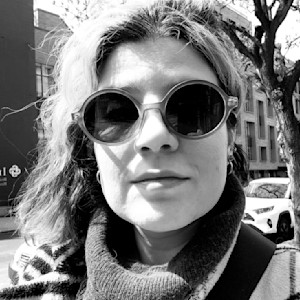
Laura Bradley
Laura is a New York-based experienced writer and mom of two rescue pups. Her work has appeared in Slate, Vanity Fair, Daily Beast, The Washington Post, The Atlantic, Yahoo! News, Vulture, Grazia Magazine, and more. When she is not writing or walking the pooches, you will probably find her in the community garden.
Related articles
![]()
13 Best Horror Movies Starring Cats and Dogs for Your Spooky Season Binging
Come for classics like Cujo, and stay for off-the-wall entries like House.
![‘Anatomy of a Fall’ Border Collie Messi Wins Palm Dog 2023.]()
The Dog Trainer for Messi, of Oscar-nominated “Anatomy of a Fall,” Talks New-Found Fame
The Border Collie is the true star of the film, which is up for five Academy Awards this weekend.
![Person with dog]()
In Folktales, Watch Teens Ditch Their Phones for a Team of Sled Dogs
The documentary follows a group of Gen Z students as they look after 40 dogs in the wilderness.
![A dog sitting in car at drive in movie.]()
9 Drive-In Movie Theaters Where You Can Bring Your Dog
Give your pup a taste of the good old days and take in a flick at one of these dog-friendly drive-ins.
![Sex and the City Carrie Bradshaw with a dog]()
Pets and the City: The Most Iconic Cats and Dogs of SATC
I can’t help but wonder: Is Carrie actually the star of this show?
![Naomi Watts and a large dog in a still from The Friend]()
Meet Bing, the Charismatic Great Dane and Star of the New Movie, “The Friend”
We spoke with the pup’s trainers about what it was like to work with Naomi Watts on the big screen.
